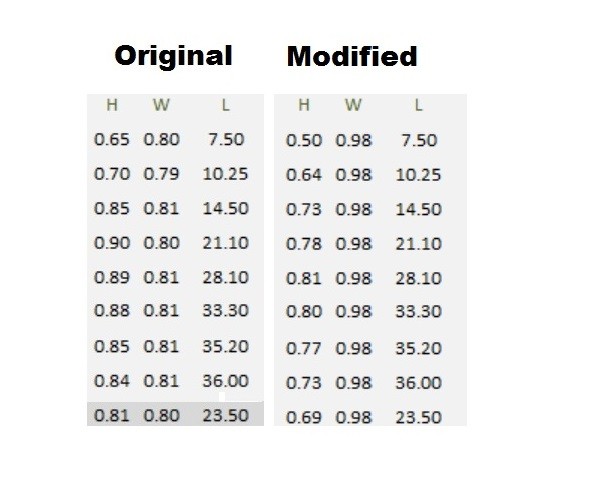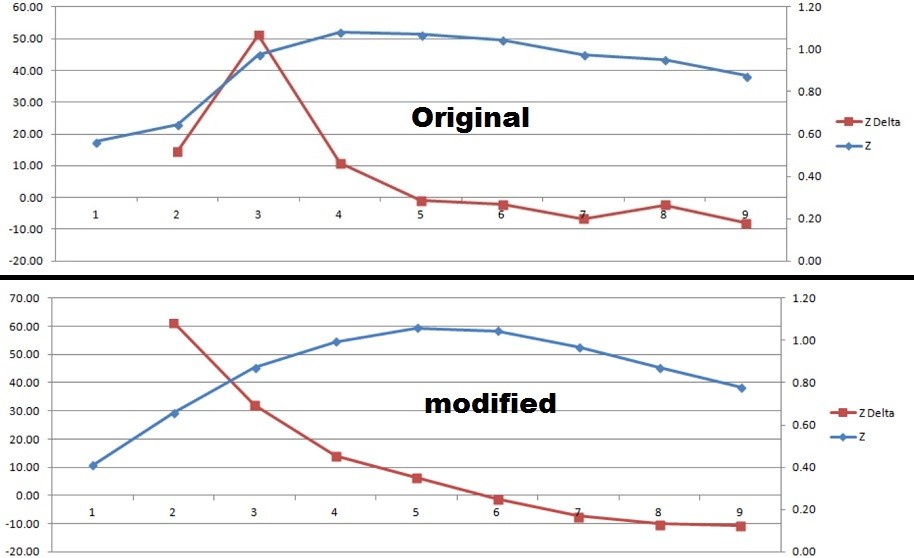I agree with Chris. I have completely remanufactured small 5'- and smaller Aeolian grands from the "not so good" years in Rochester, Chickering 5fter's, both the Boston Chickerings, the American Piano Co, and Aeolian stencil brands. They can be outstanding instruments, if you know what you are doing, and are committed to putting the time into what a top notch instrument requires. Also being mass produced cores, they are relatively easy to beef up structurally, as the processes used in their fabrication were logical and appropriate to predictable mass production. This makes correcting original quality issues relatively straightforward.
Regarding costs, Larry's comment about only large grands making sense to restore well, financially, is a common technician bias which, in my view, just swallows the BS from branded high end, "sell them up" marketers. Much to the contrary, these instruments can have significant value to a family, and to that family's connection to relatives past. The piano is to some degree a conduit of connection for them. Some place a monetary value on this emotional connection, and are highly engaged in the restoration project.
Giving these clients a really nice sounding piano, ie one that is a fine instrument in its own right, and can hold its own or surpass larger branded, more expensive offerings, is really enjoyable, can be rewarding financially, as long as you know what you are doing. And...a major point...commit the time to develop all the systems into a mated whole system.
Overpowering the incorrect biases regarding what a small piano is musically capable of, has trouble financially holding its own as a spec instrument. But frankly, so does any spec instrument these days, as the high end spec restoration market for full remanufactures is pretty well in the toilet, around here at least. Even on larger pianos, I am seldom doing soup-to-nuts full remanufactures, but prioritize the musical functionality and only address case loveliness if the prospective spec client is willing to up the ante sufficiently.
------------------------------
Jim Ialeggio
grandpianosolutions.com
Shirley, MA
978 425-9026
------------------------------
Original Message:
Sent: 02-25-2018 07:48
From: Chris Chernobieff
Subject: The case against repairing soundboard cracks
"Penciling out" is not always the determining factor. The grinnell brothers grand i'm working on is a typical case. Made in 1934, has a beautiful cabinet, and has been in the family since 1961. I never heard of this brand before, and its name has been run through the mud a little on a previous post. But, I like to be objective. It has a thick pinblock, maple/mahogany inner rim, the string frame is pretty stout, overall it's very well made. It will make a nice piano.
Regarding the price, the customer was more than happy with it.
me too.
That's a win/win!!
-chris
------------------------------
A hunter's drumbeat steers the stampeding herd,
His belly growls in hunger to what he sees.
The mammoth aware blows his mighty trumpet,
But alas, the caveman tickles the ivories.
chernobieffpiano.com
865-986-7720
Original Message:
Sent: 02-23-2018 09:54
From: Larry Fisher
Subject: The case against repairing soundboard cracks
Hi Chris, impressive before and after charts.
The lack of adhesion in general at the rim had to have supported your suggested repairs. If it were me, I would have been excited as ever to share these findings with the owner before proceeding any further.
You're putting a lot of work into this piano. From what I've seen in your video and your charts, the outcome has got to be impressively better than original. The owner will be pleased with the results.
I'm told the cost of replacing a soundboard doesn't pencil out unless it's a larger piano with a far more popular name on the fallboard. I have zero experience with this end of piano work but I've always known a proper soundboard is a great place to start when creating a beautiful sounding piano. I'm assuming you're doing this for a customer and not for fun. Perhaps I'm wrong. What's the ballpark number (dollars) for replacing this soundboard so that I can have a general idea?
Lar
Original Message------
Peter I agree. This Grinnel Brothers grand piano was most likely the result of hide glue getting cold during the process of installation. After all, there is a very short window with hide glue to get that board on. The board popped out with just two strikes with a 2 x 4. Not to mention that this board was as dead as a door nail. It had a heavy downbearing, with some crown still present, but no noteworthy tone.
I'm excited to install a new board in this one because there is so much room to make it better than it was originally.
Take a look at these changes in the rib dimensions i'm going to make. I'll be removing a lot of material to increase the boards overall flexibility. And instead of spruce ribs, this one is yelling give me some sugar.
Before and after dimensions:

Creating smooth transitions:

-chris
------------------------------
A hunter's drumbeat steers the stampeding herd,
His belly growls in hunger to what he sees.
The mammoth aware blows his mighty trumpet,
But alas, the caveman tickles the ivories.
chernobieffpiano.com
865-986-7720
------------------------------